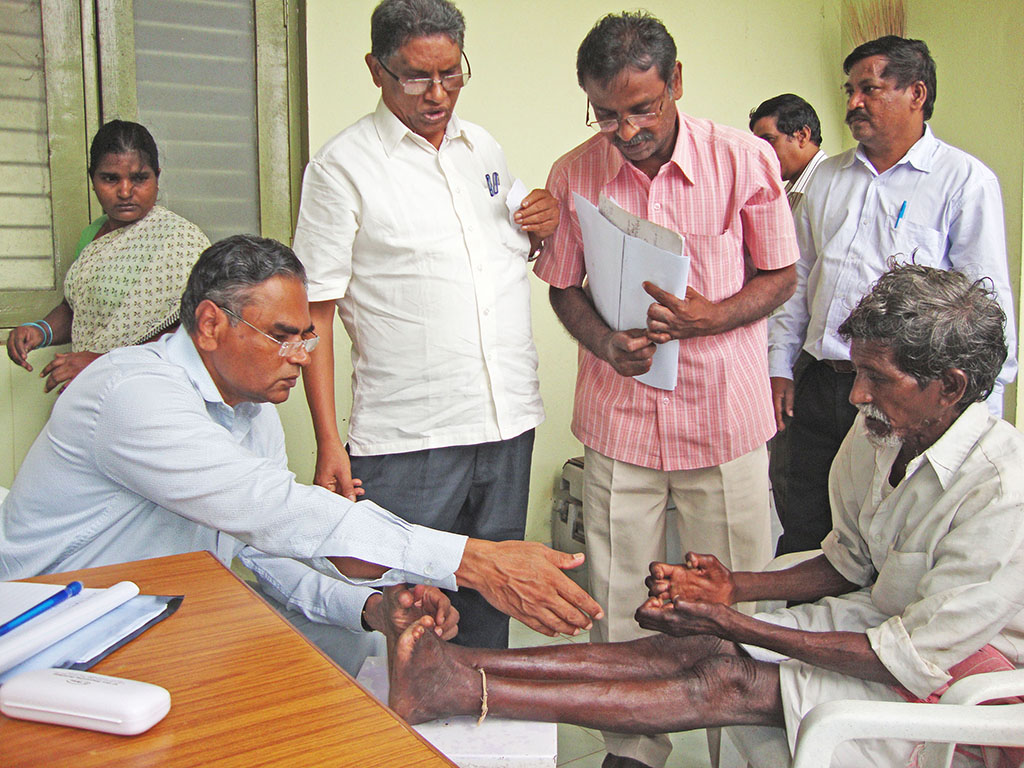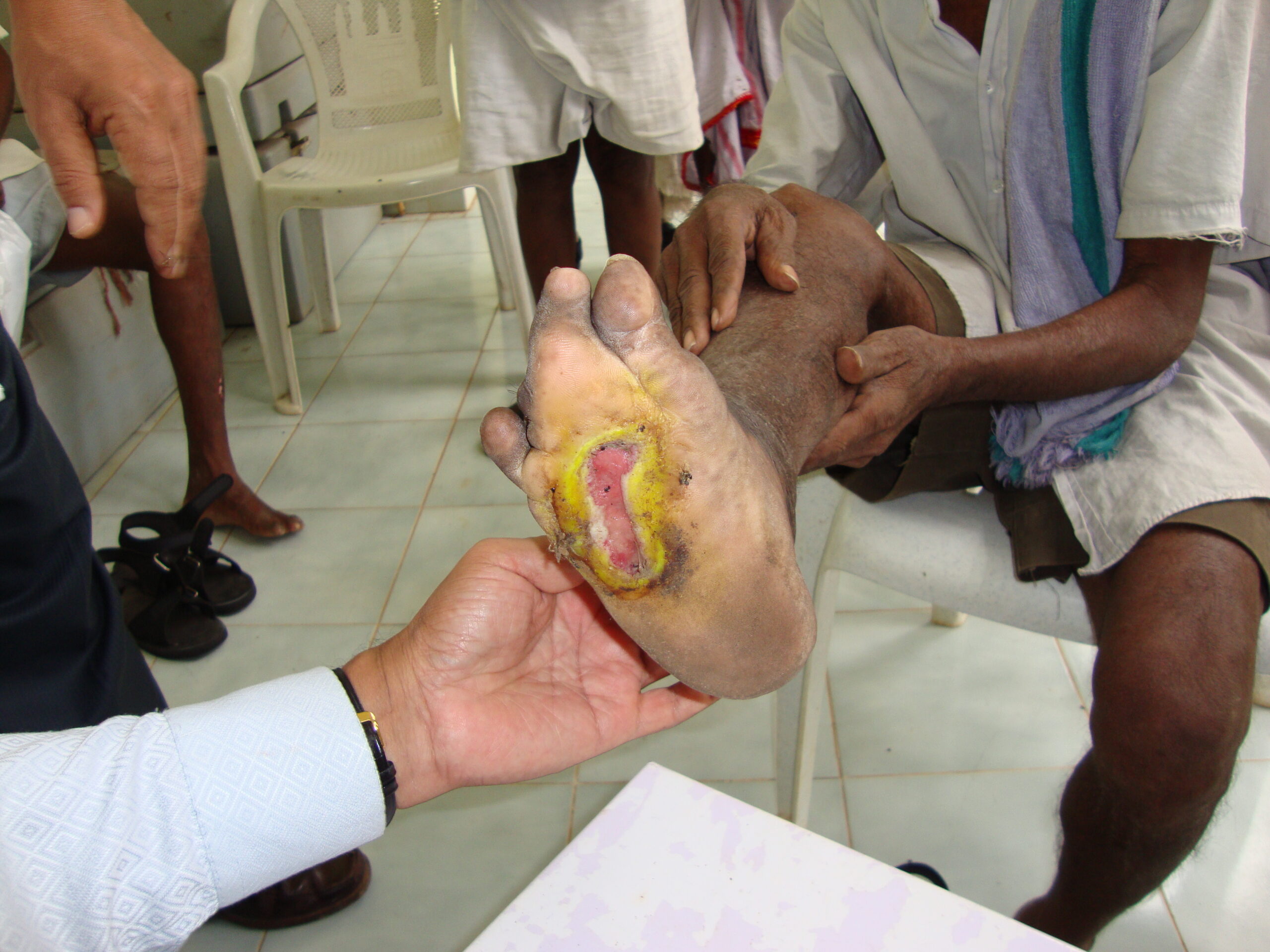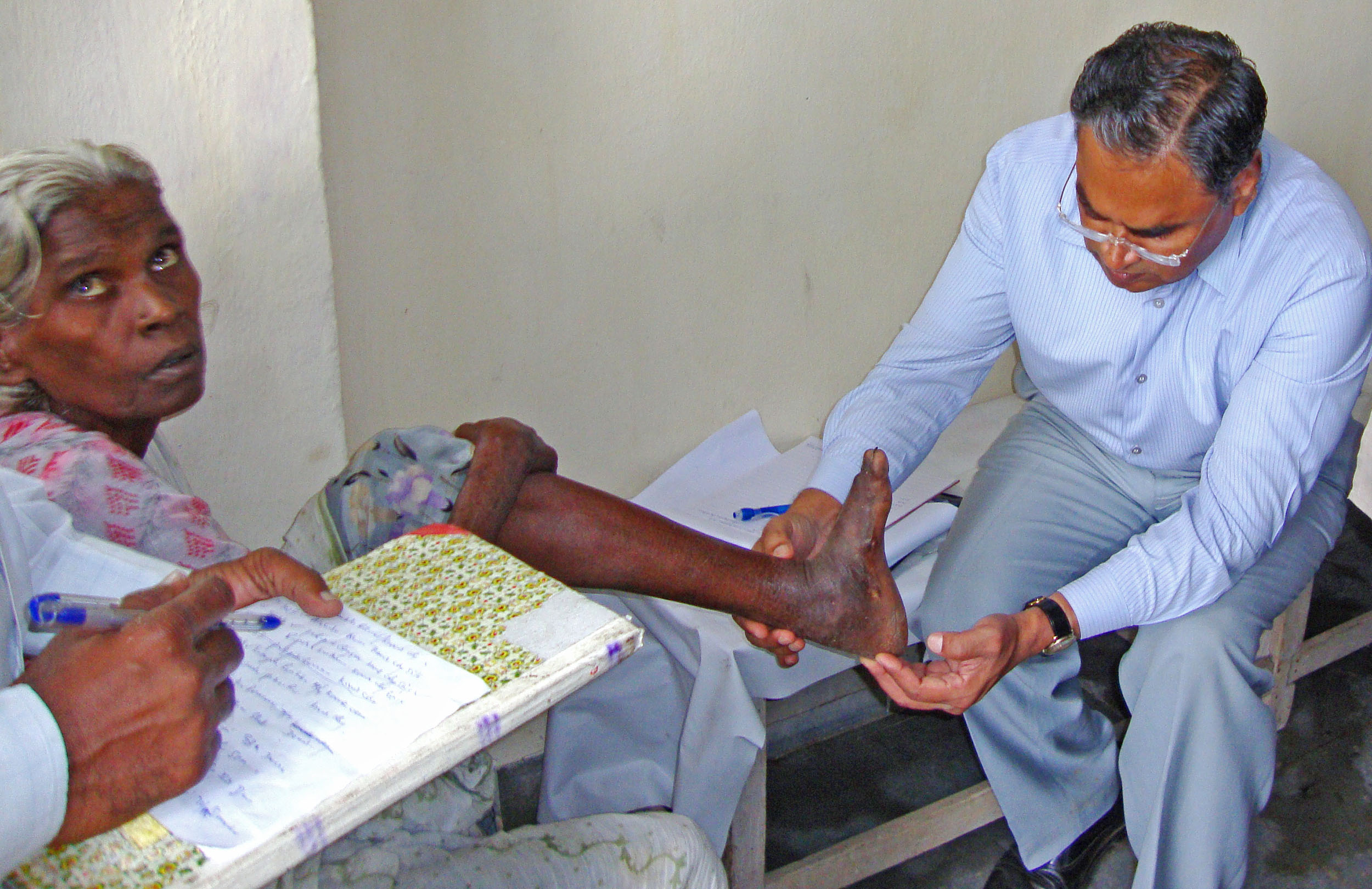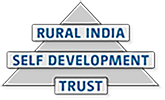Community Health Centre
RISDT has left no stone in the services of leprosy community from day one. During these three and half decades RISDT has attended 90,149 leprosy patients (IP = 21,324 and OP = 68,825) in the district of East Godavari.
Following the notification and instructions from the CLD (Central Leprosy Division) MoH, Government of India, the state and the district health functionaries started promoting leprosy services at all levels. RISDT continuously approached the District Authorities to include ‘Leprosy Activities/Treatment’ in the main agenda in all the meetings. Now all the Primary Health Centres are focusing on NLEP through its action plans and reviews. In the monthly review meetings, they use to spare time upto 1 hour on leprosy agenda. 106 such review meetings attended by the project staffs where leprosy has been addressed with focus.
The strenuous and untired efforts of RISDT for about three and half decades attained notable results in the district of East Godavari Andhra Pradesh). We have treated 10,895 patients by supplying MDT. Identified 3238 deformity cases- out of which 894 are ulcer cases. The prevalence rate of leprosy as on 1983 is 15.5 per 10,000, which has been dropped down to <0.54 per 10,000.
Now 812 sub centres out of 841, are providing dressing materials like bandages, ointments, spirits etc., for ulcer care to the people affected by leprosy. 90% of the leprosy patients are now visiting their nearest medical facilities for dressing and medical aid on their own.
2385 ANMs at all Primary Health Centres were provided with the name of the people affected by leprosy living in their working area.
ASHAs were involved in the formation of 361 self-care groups so far. The self-care groups were mainly involved in practicing it during the meetings. Efforts are made by both ASHA and ANMs to make people understand the usefulnees of practicing self-care on a regular basis and they follow it up during their field visits.
Apart from this the CLD initiated ABSULS (ASHA Based Surveillance Leprosy Suspects) system, ASHA has to report to the ANMs which will be monitored by the Medical officers on how many people she has examined on that particular month. This will be reviewed in the monthly meetings.
The supply chain system in health sector was functional upto the PHC level as far as the dressing materials and self care materials are concerned. The people need to travel from their home to the PHC or have to depend upon the ANMs or ASHAs who will get those for them from the PHC whenever they go to the PHC. The self care practice or dressing of ulcer was affected. The Project continuously advocated to extend this supply chain to the sub centres which was more near to the people for the uninterupted service. And now 812 sub centres 96.5% in total) out of 841, are providing MDT, dressing materials including bandages & ointments.
People have started coming to the sub centres, practice the self care and get the required materials and go back to their communities.
As a part of DPMR Programme (Disability Prevention & Medical Rehabilitation) which has been initiated during 2007 to perform Reconstructive Surgeries to leprosy patients in the districts of Karimnagar, Warangal, of Telangana State and Krishna, West Godavari, East Godavari, Srikakulam and Visakhapatnam districts of Andhra Pradesh, which has been recognised by National Leprosy Eradication Programme (NLEP); RISDT conducted 1305 reconstructive surgeries to persons affected with leprosy for Lagophthalmos, Palsy hands and Foot drop so far.
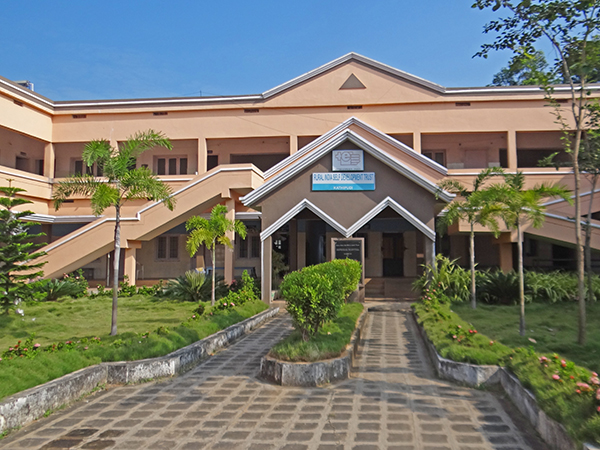
Referral Hospital
It has been established in 2000 to provide quality health service more accessible and dependable for the rural poor around Annavaram/Kathipudi region of East Godavari District. It is a 40 bedded facility for general and community health with professional staff catering 150 villages upto 50 KMs radius. Used to conduct periodical rural health camps, equipped to perform life-saving and minor surgeries with an assured attention round the clock. So far 5,63,516 patients were treated and 8,273 surgeries were performed during the journey.
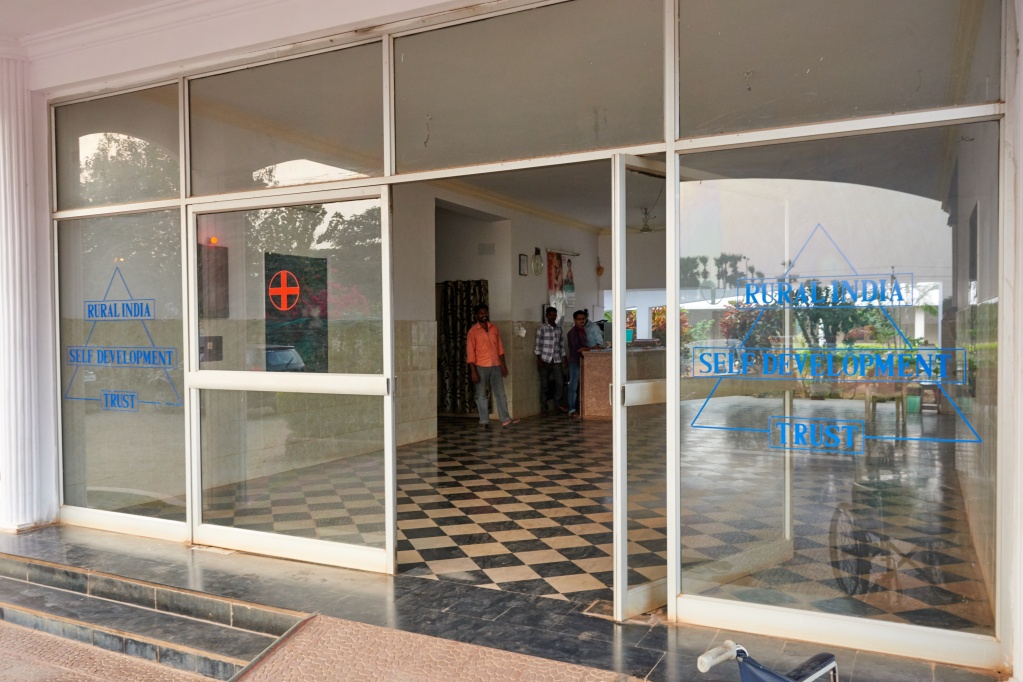
Mother and child care
Andhra Pradesh is lagging behind in performance of other South Indian states in achieving mother & child health indicators. AP is also behind the national average on these indicators. Maternal Mortality, Infant Mortality, Child mortality and anemia among children and mothers are clear indicators of the need require to address. The main activities among this are a) Immunization, b) Health education – Guidance on supplementary nutrition and using cost effective and locally available food, c) Encouraging married women using contraceptive methods, d) Pregnant women receiving folic acid and e) Childbirths attended by trained health professionals
